#Agriculture Metal Buildings
Text
Agriculture Metal Buildings | Steel Farm Buildings | Metal Ag Buildings - Coastal Steel Structures
Experience the pinnacle of excellence with Coastal Steel Structures' prefabricated Metal Farm and agricultural steel buildings, meticulously pre-engineered using high-grade steel for unparalleled quality and finesse. Elevate your projects with our expertise in Commercial Metal Building solutions and discover the durability and versatility of Residential Steel Framing. Connect with us to delve into a world of superior construction possibilities.
Know More: https://coastalsteelstructures.com/uses/agriculture-metal-buildings-farms-barns
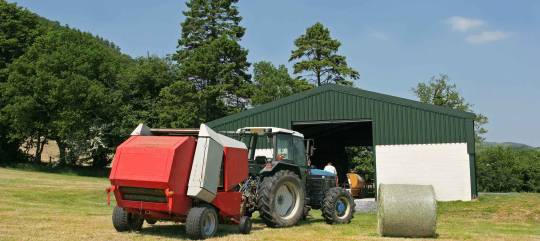
#Agriculture Metal Buildings#Metal Ag Building#Steel Ag Buildings#Agricultural Steel Buildings#Steel Farm Buildings#Metal Farm Buildings
0 notes
Text







HUYS Centre, Eeklo, Belgium - ZOOM Architecten
#ZOOM Architecten#architecture#modern architecture#design#interiors#design blog#construction#building#minimalistic#contemporary#cool architecture#cool design#old and new#old building#renovation#reuse#barn#farm#agricultural#timber#timber frame#brick#brick architecture#tower#glass#community center#belgium#concrete floors#metal roofing#barn conversion
131 notes
·
View notes
Text
Recycle
Not to go into too much background detail, quite a few of you already know it, but my family had been cleaning up the Situation at my late father's farm for years, even before he passed away. Our beloved [hmph] county has limited recycling options. In fact, for "chemical waste" there is only ONE DAY every TWO YEARS that you can drop off things you want to get rid of responsibly. Bearing in mind that, in a rural area, just taking a jug of ??whatever?? and dumping it somewhere is 1) wrong but 2) absolutely guaranteed to go unnoticed and unpunished.
We don't want to do that! We want it properly and safely recycled. But what we have, after investigating all eleven buildings on the farm where junk was stashed, is an enormous quantity of jugs, containers, buckets, and decomposing paper bags of. stuff. Old agricultural stuff, mainly, but also machinist/metal-working stuff. Most of it unlabeled, or with labels too old and worn to be read. The large glass jug of concentrated sulfuric acid was an anomaly in that it was clearly labeled in in a proper container (glass wine jug, but hey, glass is glass)
We had quite a lot of this already gathered up in October of 2019 (ha! The good old days! so quaint!). However, that October we were also planning and preparing to be a temporary wedding venue; my brother and SIL were getting married the next weekend and that had to be a priority over recycling.
October 2021 rolled around, but my husband and I were both a little distracted and, honestly, we just forgot about it. There's almost NO advertisement of this event, by the way. We were aggravated, but there was nothing to do but stockpile all that damned chemical waste for another two years.
Yesterday my husband very c-a-r-e-f-u-l-l-y loaded the bed of his pickup truck with all this . . . mess. Buckets, bottles, plastic, glass, cardboard, bags. It FILLED the 8-foot bed of the pickup. And this morning, early, he very c-a-r-e-f-u-l-l-y drove off to the county fairgrounds, to turn it all in. It will be quite a large relief to all of us to have this done with.
Damn, Dad. How DID you make SUCH a mess of this farm. How?!!!



[These are old pix from January 2021]
29 notes
·
View notes
Text
#steel buildings#metal buildings#metal buildings canada#canada#calgary steel buildings#vancouver agricultural buildings#alberta pipelines
0 notes
Photo

Bedroom - Loft-Style
Bedroom: large industrial loft-style bedroom idea with gray and concrete floors and white walls.
#heated concrete floors#agricultural building#industrial design#stainless steel staircase#winery#industrial modern#metal building
0 notes
Text
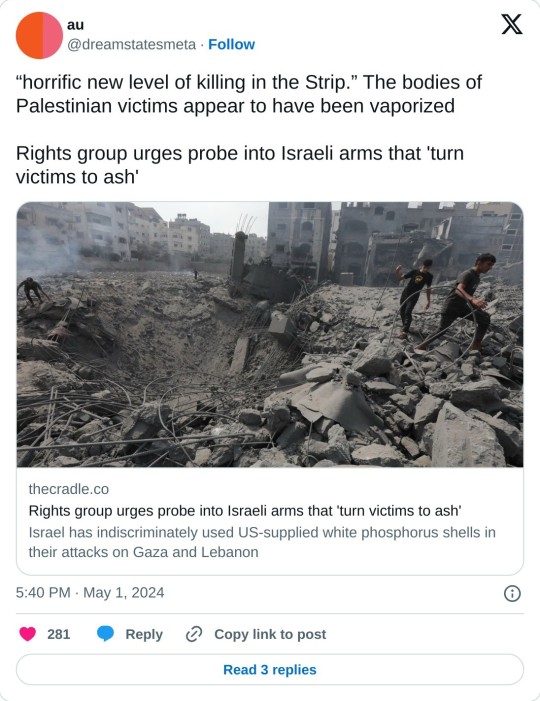
The Geneva-based Euro-Mediterranean Human Rights Monitor (Euro-Med) released a report on 30 April urging an investigation into Israel’s potential use of illegal thermal weapons.
“An international committee of experts must be established to look into the weapons Israel has been using as part of its genocide in the Gaza Strip … including the potential use of bombs that produce such high heat that victims’ bodies evaporate,” the Euro-Med report said.
The rights group cites testimonies received from Gaza which revealed a “horrific new level of killing in the Strip.” The bodies of Palestinian victims appear to have been vaporized by the weapons Israel used against residential buildings.
“Thousands of victims remain missing, either because it was impossible to recover them from under the debris in light of insufficient equipment and technical know-how, or because their bodies were either hidden by the Israeli army or no longer exist,” the Euro-Med report reads.
The report continues to say, “A number of the victims killed in these horrifying Israeli raids on residential buildings have vanished and may have turned to ashes, raising questions about the type of bombs used in the attacks.”
Thermobaric weapons, also referred to as vacuum bombs, are two-stage munitions. The first charge disperses a fine aerosol cloud of materials ranging from carbon-based fuel to metal particles. The second charge ignites the materials used, creating a fireball, shock wave, and vacuum as it sucks up the surrounding oxygen.
The blast from these weapons can last significantly longer than conventional explosives, enabling it to vaporize human bodies.
Mass graves in Gaza hospitals previously raided by Israel show that civil defense staff found “bodies without skin,” according to Gaza’s Government Media Office.
According to the Euro-Med report, “The Hague Conventions of 1899 and 1907, the Geneva Conventions of 1949, and international humanitarian law all forbid the use of thermal bombs against civilians in populated civilian areas. The Rome Statute of the International Criminal Court also classifies the use of thermal bombs as a war crime.”
Israel has also illegally deployed white phosphorus weapons on civilians and civilian infrastructure in Gaza and Lebanon.
According to a Washington Post analysis, the white phosphorus munitions used in Lebanon’s south were supplied to Israel by the US.
Palestine’s Agricultural Work Committees Union said that Israel intentionally uses chemical weapons on farmlands in the Gaza Strip to contaminate its soil, posing an increased cancer risk to farmers.
#yemen#jerusalem#tel aviv#current events#palestine#free palestine#gaza#free gaza#news on gaza#palestine news#news update#war news#war on gaza#gaza genocide#genocide#war crimes
2K notes
·
View notes
Text
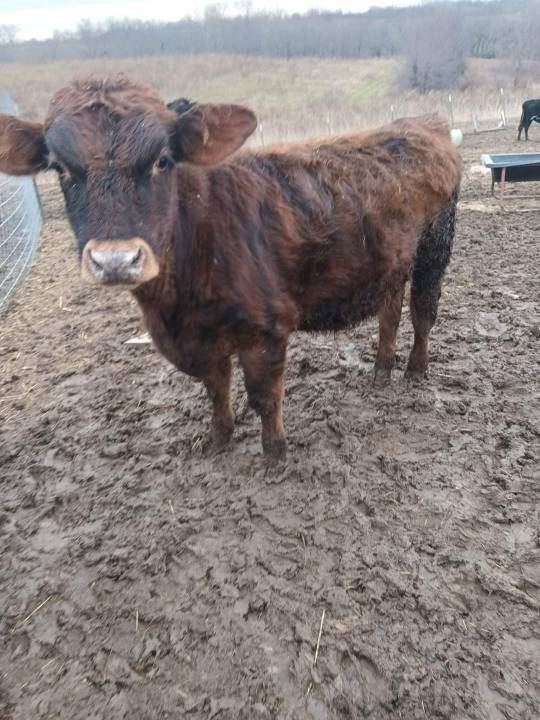

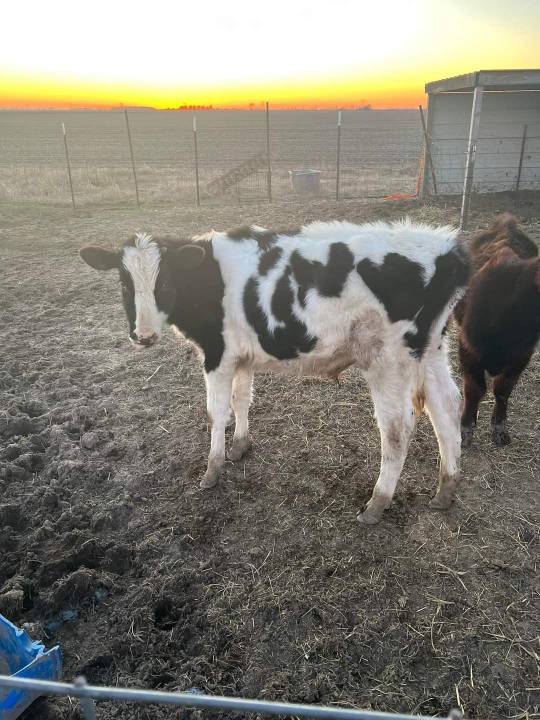
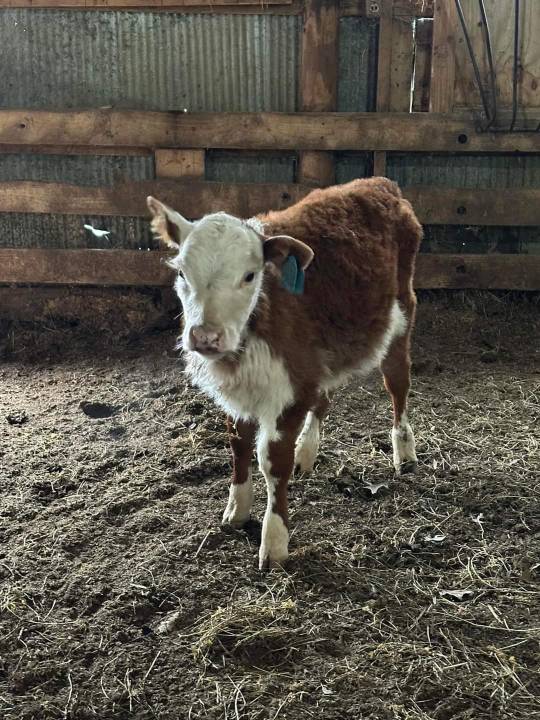

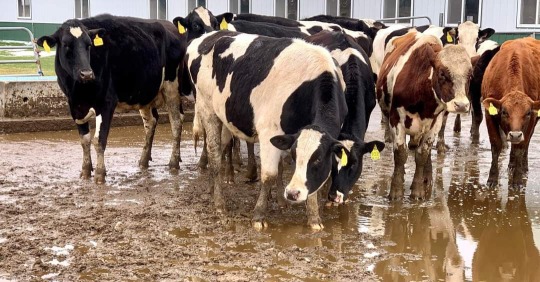
You may not want to hear this, but none of these cows in the above pictures are being neglected or abused. That last cropped picture is actually from a bigger farm as well during the storms happening during the Loon fallout event.
Mud is a completely normal part of raising livestock, especially in places where it gets wet and rainy during different parts of the year. Even the driest climates will experience a build-up of manure and mud around feeding and watering locations since livestock likes to hang out there for obvious reasons.
The idyllic pictures you see of cows in green pastures likely have a rotational grazing setup or large amounts of land, which isn't possible or feasible for most small farmers. Pastures in this state are a common side effect of having large livestock, but even chickens, goats, and dogs can turn a pasture into dirt if the pasture can't get rest. It doesn't mean the animals are getting neglected or abused, and anyone who says otherwise is likely coming from a place of privilege or ignorance.
The suicide rate for agricultural workers is five times higher than the general population. Farmers experience more debt, indignity, and isolation compared to the general population and what sucks is when I talk about this I get replies that are like "just choose a different profession" when these people are how your getting fed. Food does not magically manifest in the grocery store it comes from farmers, and farmer depression is a global crisis.
I'm sure there are some people who are uncomfortable with those photos but I want you to sit in that discomfort and realize that when you buy beef from the store it's not unlikely that that cow stood on a muddy floor and that cows have been standing in muddy pastures for thousands of years.
This isn't a post bashing rotational grazing and other forms of pasture management. I just think it's ignorant to assume these animals are being neglected because their pasture is muddy and that their owners arent always looking for ways to change that. This stuff does make it harder for people to share their troubles or profession. The cows above likely have less hoof issues then cows only on sand, metal grates, or concrete.

Memes like the above exist for a reason.
322 notes
·
View notes
Text
Tempered in the Fire - Part One

See the Series Masterlist for complete content warnings, historical event information, and series notes.
Cross-posted to AO3.
Pairing: Blacksmith!Din Djarin x F! Reader
Summary: Ireland, almost a decade after the rebellion of 1798. You are an unusual woman: married, but alone; a widow, with no certainty her husband is dead. When your local blacksmith is badly injured in an accident and unable to work, you have no choice but to travel to the next forge, run by a man of few words whose uncertain origins and dark complexion make him stand out among the locals. You are immediately intrigued by this mysterious, taciturn figure - and the striking little boy he’s taken as his apprentice.
Word Count: 3.3k
Rating: Mature (chapter); Explicit 18+ (series)
Content (chapter specific): Blacksmith!Din AU; historical setting; references to violence; references to spousal abandonment; strong language; almost certainly inaccurate depictions of blacksmithing; slightly wonky history; likely slightly wonky renderings of Irish language (technically my third language!).
A/N: Translations for any dialogue in Irish are provided at the end of the chapter. The Irish language was one of the casualties of the colonisation of the island, as it became associated with a lack of education (though the tide turned somewhat in the late nineteenth/early twentieth centuries) and has never recovered. (Go and listen to ‘Butchered Tongue’ on Hozier’s latest album for a musical reflection on this, it even includes references to 1798)
Tagging interested parties and my usual taglist people - sign up via my taglist if you want to be added (or let me know if you’d rather not be tagged!): @gracie7209, @yourcoolauntie, @tessa-quayle, @lunapascal, @julesonrecord, @trulybetty, @fuckyeahdindjarin, @katareyoudrilling, @perennialdoll247, @joeldjarin, @sunnywithachanceofjavi, @iamskyereads, @tieronecrush, @javierisms, @pedrostories, @readingiskeepingmegoing, @rhoorl, @red-red-rogue, @survivingandenduring, @khindahra, @love-the-abyss, @fictionismyreality, @imaswellkid

This is a quiet place, a landscape rendered in greens, greys, and whites, the simple rural dwellings peppering the good agricultural land that stretches across the county.
Appearances can be deceiving, though. What seems to the outsider as a long-established peace is the result of a more recent and more violent pacification. The fields where young men lost their lives in the pursuit of a dream of freedom give nothing away today, almost a decade after the rebellion was brutally crushed. They didn’t stand a chance against the arrayed ranks of muskets, being armed only with tall, sharp pikes, hammered for them on the anvils of sympathetic blacksmiths around the country.
The people who live and work here bear the scars - some literal, some psychological, but all livid, fresh, and painful.
In this idyll where trauma and anger simmers beneath the surface, his forge is a long, low, whitewashed stone building roofed in thatch. It’s a little outside the nearest village, sitting just off the main road on the way to the next big town. Like most of those who ply this trade, the blacksmith here lives alongside his place of work: one half of the building is the forge, the other is the neat, simple home he shares with the little boy he’s taken as his apprentice.
He’s an essential figure: he makes all manner of metal goods and repairs them, too, in a world where nothing is disposable. He shoes horses, too, and his gentle care for the elegant beasts is well-known around the county.
Still, he’s not the most obvious candidate for a ‘pillar of the community’. Unlike other smiths in the area he’s not known for holding court while he works, regaling his customers with yarns and stories. He keeps himself to himself, mostly, though he comes into the village with the boy to buy supplies, collect items for repair, and return what he’s mended to their owners.
He’s been at his anvil for twenty years, or thereabouts. As is the way of a small community, all manner of stories circulate about where he came from and why there was no obvious family of origin. Most assume he comes from travelling people, who are known for their skill with metalworking.
Such is his reputation for consistently good work, fairness, and decency, though, that no one would ever dream of pushing him to say more about himself. This man of few words, who wears his apron like his armour and sometimes wraps a band of grey cloth around his mouth and nose when he works, to protect his lungs from the soot and smoke, is both insider and outsider in a place where such binaries are normally strictly enforced.

“You’ll be living high on the hog soon enough, then, Din? What with all the work that’s coming your way now.”
He looks up from the horseshoe he’s hammering into shape, dark eyes staring at the silhouette of the local priest, framed by the light of the forge’s small front window. Father Carthy has come to have his horse shod - and, it seems, to discuss the blacksmith’s fortunes.
“I don’t know what you mean.”
The priest steps closer to the anvil, a look of surprise on his face when he realises the blacksmith hasn’t heard. “Bad accident over in the forge at Donapatrick. He’ll be alright, but their smith is out for the next few months, at least. He’s lucky to be alive.”
Din dips the shoe into a tub of cold water, sending a hiss and a plume of steam into the air.
“So they’re coming to me?”
“Most of them. Your reputation precedes you.”
He wipes the sweat from his brow with the back of his hand. “Not sure I can take on all that extra work.”
Father Carthy scoffs. “Don’t turn it down, Din. Lean times are always waiting round the corner, just when you least expect them.” He peers around the stone forge at the centre of the room, trying to spot the little figure who’s been hiding in the shadows.
“Sure you have an apprentice to help you, don’t you?”
The little boy stares silently, intently with his huge, dark eyes at the man clad in clerical black.
“Well, he’s inherited your gift of the gab, Din, anyway. Look, you’ll be glad of the few extra shillings. I know it’s not always easy making ends meet, between looking after yourself and the lad.”
Din pulls himself up to his full height, cutting an imposing, broad figure in his soot-marked shirt, leather apron, simple brown woollen breeches, and boots.
“We manage. Gró?” The boy appears at the blacksmith’s side. “Tabhair dom na tairní, maith an bhuachaill.”
He swiftly locates a box of horseshoe nails, each made by hand at Din’s anvil. The priest raises an eyebrow.
“He’ll need English, Din, or he’ll get nowhere. I’d be glad to teach him if-“
Din cuts him off with a pointed sigh. “He understands every word. But this is how we talk to each other.”
Behind him, the sandy-haired boy narrows his eyes and scowls at Father Carthy.

You know it’s not usual for a woman of your age and station to ride alone, but then you’re not usual for a woman of your age and station. And your washtub is leaking, and your horse needs to be shod. Needs must.
You saddle up the horse, strapping the tub on one side, and wrap yourself up in your shawl, securing it at the waist with a well-worn leather belt. You mount the little brown horse and turn her in the direction of Donapatrick and the local forge.
“How did you not hear?” Seán, the blacksmith’s apprentice, stares up at you in astonishment. “Everyone heard!”
You feel like kicking him in the ribs for talking to you like that. He’s no more than thirteen, and yet here he is talking to a woman who could comfortably be his mother (and then some) like she came down in the last shower.
“I didn’t hear because I wasn’t told, and because I have better things to be doing than gossiping around the village.”
He rolls his eyes. “Well, regardless. You’ll have to go over to the other forge - the fella over the bridge, about twenty minutes away. You know it?”
You do know it, though you’ve never had reason to go inside. Why would you, when Peter’s forge is so much closer? You don’t even know the other blacksmith’s name, and in this part of the world that’s a strange situation indeed.
“Right, so.” You gently dig your heels into the horse’s sides, she starts to walk, and you make your way to the road that leads down to the river, the stone bridge, and, eventually, the whitewashed forge beyond.

Just as Father Carthy had predicted, Din was snowed under with extra work since Peter’s accident a week or so before. He is exceptionally well-organised by nature, managing his own accounts and records with great attention to detail, and he has extended the system to help him cope with the new demand. With Gró’s help, he organises the items for repair into separate sections, labelled according to whether they belong to existing or temporary customers. He sets up a new ledger to take account of custom orders from people who normally go to the other smith, and takes note of new faces who come to have their horse shod.
Din is cross-checking his records at the table in the main room of his home when he hears the sound of hooves approaching. He asks Gró to peek out, to see if it’s a familiar face or another new customer.
The boy climbs up on the deep windowsill to look out through one of the small cottage windows.
“Is bean ar chapall í - ’s stráinséir í.”
Din stands up and goes to the door, reaching for his apron as he does so.

He cuts an unusual figure, this blacksmith. There aren’t many people around here who look like him. You notice the penetrating dark eyes first, taking you in as you slow and pull up the horse. His dark hair is wavy, curling in places, and you are surprised to see that he’s bearded - if you can call the patchy scruff around his mouth and jaw a beard.
He’s younger than you’d expected, maybe forty, and well-built - broad shoulders, strong, muscular forearms marked with scars from his work, his shirt loose and open to expose a stretch of his tanned chest. He ties on a leather apron as you dismount, and walks out to greet you.
“Good day. I was hoping you could help with a repair? And my horse needs to be shod, too. I’m sorry, I usually go to Peter up in Donap -“
He cuts you off with a nod. “I know. Yes. That’s fine. The tub, is that the repair?”
You raise your eyebrows at how direct he is. Curt, almost. Rude, some would say.
“It is. It’s leaking at the side, here.” You undo the strap and he takes the washtub down. It looks strangely tiny against his substantial form.
He turns and gesticulates with his head in the direction of the open door. From the dark interior, a striking boy emerges, clutching a piece of paper, some string, and a stubby pencil.
The blacksmith gives him instructions and he diligently scrawls a number on the paper, before attaching it to the tub with the string and carrying it into the forge.
“Do you only speak in Irish to him?”
The smith has turned his attention to your horse, examining each of her hooves in turn. He looks at you quizzically.
“It’s what he prefers. What we prefer. He understands English perfectly.”
“Unusual that he’s fair and you’re dark. Is his mother fair? I suppose she must be.”
He sighs.
“I don’t know.”
You can’t stop yourself from letting out a little gasp. He looks up at you, dark eyes frustrated at your constant chatter. But he knows this needs explanation.
“He’s my apprentice. He’s a foundling. I’ve taken him as my own.”
You feel your face heat, embarrassed. “I’m sorry.”
He strokes the horse’s muzzle, not looking directly at you. “You didn’t know. I can shoe the horse now, though you’ll need to wait. The tub will take a day or two.”
You nod in agreement.
“What’s her name?”
His voice is softer. He’s still looking at your little horse, who’s loving the attention from this new person.
“Réaltín.” She has a perfect little splash of white between her eyes, in the shape of a little star. You couldn’t have named her anything else.
He repeats the animal’s name, and you see the tiniest hint of a smile cross his lips before his serious expression returns.

It turns cold, and you wait it out on a stool just inside the door of the forge, glad of the warmth.
You watch as the blacksmith heats up and works the metal shoes at his anvil, so they’ll fit Réaltín’s smaller hooves perfectly. The light from the fire illuminates his features as he works, highlighting the beads of sweat on his brow and picking out the various shades of brown in his eyes. He has pulled a band of grey cloth over his nose and mouth, which draws your attention all the more to his dark gaze.
The little boy stares at you while the man works, occasionally helping him by fetching an implement or helping work the bellows. You give him a little wave and a smile, hoping he’ll respond. He doesn’t come any closer, but you see him grin for a moment before he disappears behind the broad figure of his master - well, his adoptive father, if what the blacksmith said is correct.
Peter’s forge is always full of chat and song and gossip, a kind of social hub as much as a vital service. In contrast, the only music here is the singing of the anvil as the silent, stoic smith works, interspersed with the whoosh of the bellows and the hiss of the cooling tub. He doesn’t look at you, eyes always trained on the task at hand or at his little apprentice. He doesn’t speak, except to the little boy.
After a few exchanges, you realise something. “Is he called Gró?”
The smith keeps working. “That is what I call him, yes.”
“Funny to call a little thing like that after a poker.”
He turns his attention to the fire for a moment before he answers you. “He kept trying to stoke the fire on his own when I first took him in. I said the word so much it became his name. He likes it.”
Silence. Singing metal. Hissing steam.

He makes sure Gró watches him at every step as he removes the old horseshoes, cleans Réaltín’s hooves, files them carefully, and attaches the new shoes. Throughout, he quietly explains to the boy what he’s doing, and why.
Your stomach is rumbling, and you remember the supplies you brought with you (and had forgotten about).
When they’ve finished the last hoof, you speak up. “I - I brought a cake of fresh bread with me, in case it took longer. And I have butter, too, and a little crab apple jam. I’d be glad to share it with the little lad.”
Gró’s enormous eyes widen with excitement and he grins. (He really does understand English perfectly, you think.)
“We have enough food for ourselves, thank you.”
The boy’s face falls.
“I just meant as a little treat. A thank you, for taking the job when you’ve so much to be doing.”
He sighs, again. “Well… ach. Yes. Come in.”

Their home is neat and simply furnished, and he evidently knows how to look after a household as well as a business. You sit at the wooden table in the main room, which serves as kitchen, living area, and office for the blacksmith’s records. Out of the corner of your eye you spy a ladder going up to the attic, which you presume must be used as a sleeping space. A door leads off the main part of the house to what looks to be a smaller room.
Gró is already on his third piece of bread, butter, and apple jam, a shiny orange smear on the tip of his little nose.
“I hope this tastes okay. It’s always so hard to know when you churn butter, isn’t it?” You sip some of the cool water he’d poured into an earthenware mug for you.
“I don’t know. I’ve never churned butter.”
His reply is so deadpan that you wonder for a moment if he’s joking. You decide he isn’t.
“It’s not that hard,” you continue. “And I have the cow and the milk so why not?” You chew on a bit of bread, appraising your handiwork. “Actually, not bad at all, this time.”
He grunts in agreement. “You have a farm?”
“A very small smallholding. Tenant to the lord, like most of us.”
“Your husband works the land, then.”
You stare at the crust of bread in front of you, and clear your throat.
“He doesn’t. He’s…not here. He’s gone.”
The blacksmith’s eyes soften. “I’m very sorry for your troubles. Sickness, or was it in the fighting -”
You look at him directly. “That bastard wouldn’t fight for anything, not even his wife. He’s not dead. Or at least, I don’t think he’s dead. But I wish he was, because then I’d really be free.”
For a moment it looks like the stoic blacksmith is going to choke. He reaches for his own mug and drinks deeply.
“Well, now, I -“
“He upped and went. A few years back. God knows where he is now. He’s not around here, anyway. I’d say he’s skipped to Belfast or London.” You finish your bread. “Lucky the smallholding had come through my father, so I wasn’t out on the road.”
He’s flushed, and evidently a little uncomfortable. Well, he started it, you think.
“How do you survive - do you have children, too?”
You shake your head. “No, a blessing not to have them. And I do what I did before I married - I sew. Mostly alterations and refashioning and repairing, now, but at least I have a trade.”
The smith nods to himself. “A useful one.”
“Not as useful as yours.”
He gives you a tiny, blink-and-you’ll-miss-it smile.
You stand up and start to clear the dishes. “Keep the rest of the bread and the butter and jam. I’ll collect the jars when I come back for the tub.”
He starts as if to speak, standing up from his chair, and seems nervous.
“Could I - we - ask you to do something for us?”
“It depends, but…”
“Clothes. Gró’s clothes are in need of mending. Badly. Would you be able to help?”
You smile and nod. “I’d be delighted to. Lord, has the poor lad been going without mending for this long?”
The smith opens a wooden chest and takes out a small bundle of tiny items of clothing. “Not quite. Peigí normally does it, but she’s been so busy with the work in her yard lately that I didn’t want to ask.”
Peigí is something of a legend in the area, a fiery woman who stubbornly insisted on taking over her father’s trade in repairing carts and wagons - and succeeded. You smile wryly to yourself at the vision of her wielding a needle and thread.
He hands you the clothes, wrapped in a faded piece of red and white cloth. “Oh, hold on.” He reaches back into the chest and retrieves a dark grey knitted sweater that has seen better days. “I don’t know if you darn, too, but he’ll need this in the colder weather, and -“
You take the sweater, handling it with care, and clutch the little bundle to your chest. “It’s no bother at all.”
He smiles, genuinely smiles, at you for the first time. You marvel at how such a stern, hardy man can reveal himself to be quite so soft - eyes crinkling, expression warm and friendly, teeth white in that tanned face streaked with grime from the forge.
“Thank you…?” He pauses, waiting for you to introduce yourself. You tell him your name.
“And you’re…”
“Din.”
“Din. And Gró.” The little boy swivels in his seat at the sound of his name, and sends the sneaky spoonful of apple jam that he’s been enjoying flying to the flagstone floor.
Din accompanies you as you strap the bundle of clothes to the saddle, and mount Réaltín for the journey home.
“I’ll be back in two days for the tub. I’ll bring his things then.”
Din gives the horse an affectionate pat, and nods as you turn and head back up the narrow road.
Gró has come to the door of the house.
“’s bean deas í, a dhaid.”

Translations:
Tabhair dom na tairní, maith an bhuachaill.
Give me the nails, there’s a good boy.
Is bean ar chapall í - ’s stráinséir í
It’s a woman on a horse, she’s a stranger.
’s bean deas í, a dhaid
She’s a nice lady, daddy. (Can also mean ‘pretty lady’).
And yes, ‘gró’ in Irish can mean crow-bar - or, in older dialect, a poker.
#tempered in the fire fic#din djarin au#blacksmith!din djarin#blacksmith!din djarin x f!reader#din djarin fanfiction#historical AU#the mandalorian AU#the mandalorian fanfiction#pedro pascal character fanfiction#pedrostories
194 notes
·
View notes
Text
The 2024 Global Resource Outlook, developed by the International Resource Panel with authors from around the globe and launched during the sixth session of the UN Environment Assembly, calls for sweeping policy changes to bring humanity to live within its means and reduce this projected growth in resource use by one third while growing the economy, improving well-being, and minimizing environmental impacts.
The report finds that growth in resource use since 1970 from 30 to 106 billion tons—or from 23 to 39 kilograms of materials used on average per person per day—has dramatic environmental impacts. Overall, resource extraction and processing account for over 60% of planet-warming emissions and for 40% of health-related impacts of air pollution.
The extraction and processing of biomass (e.g., agricultural crops and forestry) accounts for 90% of land-related biodiversity loss and water stress, as well as one-third of greenhouse gas emissions. Similarly, extraction and processing of fossil fuels, metals and non-metallic minerals (e.g., sand, gravel, clay) together account for 35% of global emissions.
[...]
At the heart of global resource use are fundamental inequalities: low-income countries consume six times less materials and generate 10 times less climate impacts than those living in high-income countries. Upper-middle-income countries have more than doubled resource use in the past 50 years due to their own growth in infrastructure and the relocation of resource-intensive processes from high-income countries.
At the same time, per capita resource use and related environmental impacts in low-income countries has remained relatively low and almost unchanged since 1995.
94 notes
·
View notes
Text
It was the same thing with Zagreus and Hades, but I like how in Hades II the designs of Melinoe and Chronos are so similar. The shape of their outfits (well, the bottom half - belt and skirt, cause Chronos is too old for a shirt) is more of less the same, they both have some sort of metal collar and armguards (and hey silver/gold dichtomy).
But the thing I've noticed first is that Chronos wields essentially an older version of Melinoe's cover weapon. While she has a dagger (not important at the moment) and a sickle, his weapon is a scythe, and they are both agricultural tools first. Compare to Zagreus, whose weapons were all, well, weapons.*
Real curious if Supergiant will go the way of building an actual relationship between Chronos and Melinoe, could see it as well you trapped my family but you can't be killed so might as well see what your deal is. (if the heat does not kill me, I might even write a fic out of it)
*there is something to be said that when the protagonist is a man, he wields actual weapons, but female protagonist gets magical staves, skulls (that one is cool), torches (???) and more "feminine" weapons (daggers). The only thing I will call a weapon is her axe. She is supposed to be a witch, I guess? But still, give her a sword, she was training to be a living weapon since infancy.
49 notes
·
View notes
Text
Filtering Non-serious Prospects: Addressing Quote Request Overload in Steel Construction

Businesses that manufacture or construct steel buildings daily are fielding inquiries about pricing, customization, and construction timeframes. Steel buildings have numerous uses, whether for an indoor horse riding arena or covered riding arena, an industrial manufacturing warehouse, farming, agricultural buildings, or even aircraft hangars.
Know More: https://coastalsteelstructures.com/filtering-non-serious-prospects-addressing-quote-request-overload-in-steel-construction/
#covered riding arena#Steel Aircraft Hangars#Agriculture Metal Buildings#hangar kit#Agricultural Steel Buildings
0 notes
Note
OK SO. Lore
Krills reside in Wasteland, the place currently experiencing constant cloud cover.
krill were not there before the cloud cover was there.
Krills also reside near the top of Eden Peak.
in-between wasteland and eden lies vault...
so why havent krills spread to vault?
In the crescent oasis, krills are seen in the final quest. when a storm is raging.
ok so. krill have bad eyesight. they kill creatures of light.
but when the krill try to attack something but realize it has the Krill Juice on it (krill repellent) they fly away. Crabs just so happen to produce Krill Juice. on their bodies.
perhaps crabs (their children) get mistaken for light creatures and get attacked, but the krill's antennae detect the pheromones (krill juice) and divert before any harm can be done.
Crabs have shells, their real bodies are exposed in the bottom thats why they pull their legs in when they get attacked but not flipped and also why they hate being flipped
krills have metal exoskeletons and their real bodies are inside and thats why krill are so clink clonk
So krill are adult crabs. but why dont krill exist in the kingdom before wasteland and eden were engulfed in storm?
ITS SIMPLE
crabs can only fully mature DURING A STORM OF THAT SIZE
THE STORM HAS DIED DOWN THATS WHY ALL THE CRABS IN WASTELAND ARENT KRILLS
crabs: forest, valley, wasteland, vault, eden
krill: wasteland, eden
the crabs are everywhere but the krill are only where there was once/ is a great storm
,... if i was a spirit in sky i would be the Crazy Krillologist
putting my answer under read more as it's long -ymir
Crabs are actually have signs of being native to the realms (see: the passive crabs from Sanctuary, that iirc don't shed darkness), and seem to actively be mostly corrupted by darkness (the crabs from the shard events having active darkness on them, leading them to become hyper aggressive and those passive crabs do not attack players).
Crabs are creatures of the dark, but it is likely from the fact they're suppose to show that darkness has always been in the realms and that before what wiped out the spirits it was very peaceful (mostly). Places like Hidden Forest were darkness mining sites, and it likely made many sickly and polluted the areas leading to the rain being worse. The bells used to call the rain away and to call for the rain likely was used to try and control the dangers of this build up, controlling when spirits would have to take cover most likely.
The description of Prairie's Elder pin also pushes at it being an agricultural center for the Realms, as hinted by its landscape as well. It is VERY likely the bells used also pushed away the pollutants from hitting Prairie as heavily (but it still hit the lower regions, seeing Sanctuary's large darkness plants and pollutants.)
Darkness affects Valley less due how high it is, but it still has gotten hit due to how close it is to the center of the factories. Golden Wastelands was where a good majority of the factories were (and mostly off to the side from the main path, but WERE linked and using pipes to move around darkness), and due to this, it had become highly polluted over time leading to the dangers and likely pushing for new solutions to lead away the creatures that were becoming a problem, as well as internal fights. Wastes HEAVILY hints to it being highly dangerous but made mostly to try and protect Vault from harm and protections against enemies (in some old concept art, there's some old details of other things that was planned originally to be some dangers, but most aren't much a concern to consider due to being scrapped). There's more things about vault that makes me curious, mostly the use of HOW the archival systems work likely using a mixture of darkness that reacts to light to produce energy (which we do see in places like the abyss areas iirc and no longer simply concept art). the use of darkness here likely also caused there to have some spills or leeching to allow darkness to affect any creatures inside as well. The Ghost light creatures inside are their own curiosity to me, but not of concern here too either.
but Eden? oh boy.
Eden obviously has architecture of a very important site to the culture of the spirits at least, and it's also very likely used to be a factory of it's own or at least some sort of possible experimental grounds. (there are hints of other things, but ya know, silly lil things :)!) Eventually the eye is shown to have occurred, and is possibly shown to have started to chip off as well.
why did I write down a good summary of the lore linking towards darkness in general?(skipping over some other seasonal stuff mostly) I think the krills can be from multiple things in origins in reality.
Krills are beings that hunt light, and can still be tricked from covering yourself in darkness. The potions of krill repellent likely use darkness to make it look like it would for their vision of crabs, darkness falling off of them. it's likely made to be far more safe for skykids though.
Krills- or dark dragons, could simply be mantas corrupted, whales as well, etc. They could easily be many species put into one. They're dark creatures caused by the pollution of darkness, typically pushed on by darkness taking over an entire area, suggesting that they're an entity of darkness as a whole. They react the same way dark crystals do as well, turning red and hurting light creatures. They're simply seemingly following the dark crystals and how they react. Blue dark crystals are ones that show that they are not longer active or have reached a neutral state (likely the state they were originally mined at and then refined away from), and the skykid statues you can not help on the path at the end of Eden before the Eye's storm have these blue crystals growing on them that no longer react to skykids and you can't revive these two skykids leading to the chance of them being from the mass explosion of energy of the Eye's start.
Storm clouds are a sign of darkness in Sky, its very likely rain from before was less dangerous. Crabs being thrown FROM the shards could be crabs grown from the darkness or originally in that sacred area that ate up the remaining light left over from light creatures going to be reborn, which could be a point of them simply originally being scavengers of sorts like some real crabs.
Krill horns likely do have their own use most likely than possibly being antennae, I believe personally them being mostly for the advantage of being able to still attack their prey: making it difficult for prey to escape from flying over the head due to the krill's head without the horns being in the way. Krills metallic sounds could also be possibly connected to the darkness within them since darkness is far more solid than fluid (darkness creatures typically having sharper edges or entirely like smoke, compared to light creatures having this fluidity to them even when complex like skykids.)
Dark dragons are a curiosity though, given how they're created either way.
-ymir
#( I was here before the lore was down. I have absorbed so much sky lore for so many years. this is fun tho. miss this stuff -ymir)#(I don't remember most of the lore of most seasons after like abyss to be warned. because I am a silly guy who was burning out -ymir)#(If I get any lore asks and stuff further from this. I am gonna scruff it to my own skyblr for simplicity I suppose -ymir)#(because I don't really want to drown this blog in non-news stuff too much. but yeag. sky-poprocks <- there ya go -ymir)#(I probably have some of the lore mixed up as well.. since.. I've been in skyblr for 4 yrs and used be into the lore ideas-ymir)
53 notes
·
View notes
Text
No but Luke 100% went to a moisture farming school that taught like real world applicable skills like vaporator/droid fixing, calculating moisture levels, hydroponic gardening etc. Basically like those agriculture schools that directly lead into farming jobs yk? But luke didn't give a shit about agriculture and he doodled ship schematics in his holopad and tried to build his own ship during school break and had to be dragged off from his metal death trap ship by obiwan
75 notes
·
View notes
Note
Hi, thank you for your blog. I have a greatsword wielding warrior and a dual shortsword wielding rogue that I would like to have work as a team to take down enemies. How can I write this in a realistic and believable way?
By remembering that the greatsword is a front line combat weapon, and the rogue's combat style is shanking people in the back. This isn't the kind of pairing where you get two characters working in tandem, rather it's a situation where you have two very different approaches to combat and problem solving. Ironically, even before you get to the weapons, these are going to characters who would approach each challenge in very different ways, if they were left to their own devices.
It's up to you whether they bicker over the merits of their approach over the other's, or work together smoothly, playing to each other's strengths. Either route can result in a satisfying narrative, and transitioning from the former to the latter over the course of their adventures can create a compelling arc for them.
As for what to gear them with, that's a more difficult question, but one thing to keep in mind is that both of them would be likely to keep a few weapons on hand. The warrior might keep a smaller sword, a dagger, or a hand axe on their person (probably more than one of the above.) The rogue might also have a bow and some daggers. They might also have a longsword or rapier, depending on the weapons available in their setting. If you're going for realism, a rapier would probably make more sense than dual wielding shortswords. With them off-handing a parrying dagger when they need it.
So, some things that are worth thinking about. Greatswords (and the rapier) are a fairly late sword design. By the time greatswords were in use, militaries were already transitioning into shot and pike tactics. Which is to say, firearms were on the table. In most cases, modern Fantasy, inherits a lot of it's technological approach to Lord of the Rings. There's nothing automatically wrong with this, but it does result in a curious absence of early firearms that would have already existed by the time the greatsword came into use. The existence of magic, or even geological differences in the fantasy world could explain this omission, but many authors simply don't think about it.
There's a lot of reasons why your rogue or warrior might not carry a gun. For the rogue, they're loud, clumsy, and expensive. For your warrior, they're clumsy, expensive, and difficult to maintain. Though it may be worth considering that other characters might shove a blunderbuss against your hero's head to punctuate their argument.
Some other frequent technological stumbling points are, armor designs (a lot of writers are not careful about picking the correct time period for armor designs. Similarly, armor production is very material intensive. So, people living in areas with limited metal won't be able to invest in full plate armor, versus mineral rich nations), fortifications (especially, “ancient ruins,” that are more technologically advanced than the chronology allows), ships (if I had a nickle for every time I've seen a sea going vessel designed to mount cannons in a world without gunpowder, I'd have a couple bucks), architecture, and agriculture. If you have a specific technological level in mind, it's probably a good idea to research that era of history until you have a pretty solid grasp of what life was like. (Fortunately, archaeology should have you mostly covered here, and the stuff you find will be fascinating.)
The short version would be to think about your characters bouncing off each other, rather than just their weapons, and build a believable world for them to inhabit.
-Starke
This blog is supported through Patreon. Patrons get access to new posts three days early, and direct access to us through Discord. If you're already a Patron, thank you. If you’d like to support us, please consider becoming a Patron.
#how to fight write#Starke answers#writing advice#writing reference#writing tips#character building#world building
128 notes
·
View notes
Text




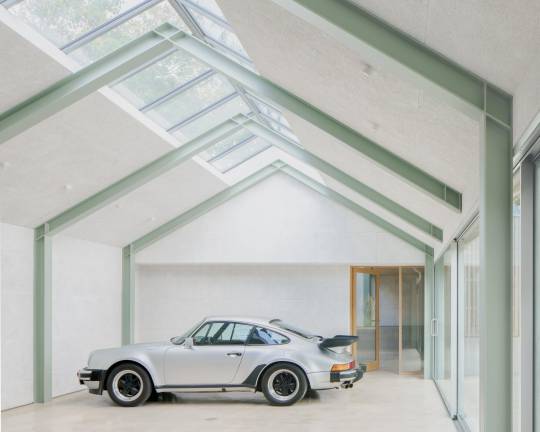


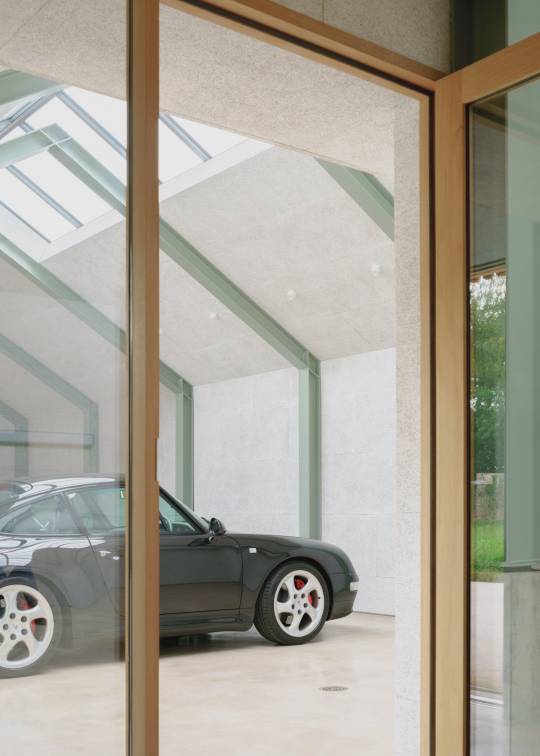


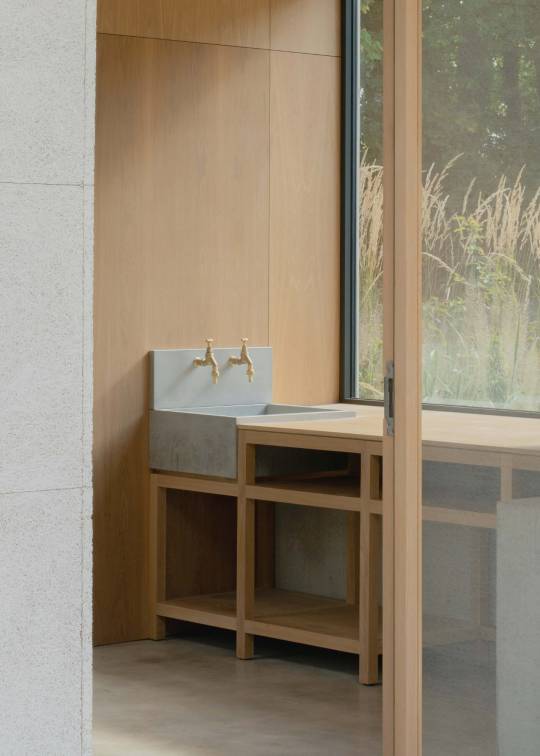






Autobarn by Bindloss Dawes
The Autobarn is the realisation of our client's long-term dream to house his collection of classic German cars. The project is composed of two volumes: a clean, five-bay garage for everyday use and a taller workshop for repairs and future restoration projects.
Beyond satisfying this initial use, the project ambition was to create a flexible, 'long-life, loose-fit' building that could be used for a range of different uses. Currently it doubles up as event space, however the ambition is that the Autobarn could one day become a low-energy house.
Located on the outskirts of a small Somerset village, the project is set within the grounds of an eighteenth-century Grade 2 listed house. It replaces several haphazard outbuildings and consolidates their amenity into an elegant architectural proposal, nestled within a glade of mature trees.
The project's design references the language of neighbouring agricultural barns. As a practice we are interested in reassessing the rural vernacular, both for its contextual appropriateness and its lessons in low-cost, pragmatic design. As such, the Autobarn re-interprets simple forms and methods of construction, adapting more temporary, rudimentary methods into a robust and elegant paradigm for low-cost, rural architecture. Composed of a concrete base and steel framed structure, intermittent timber cladding and zinc metal roof, the Autobarn adapts barn typologies with varying levels of refinement. Consideration was also given to its weathering, with the natural zinc roof dulling to complement the silver patination of the sweet chestnut cladding.
Like many barns, permeability to light and air is controlled through a series of movable layers. First experienced as a closed solid mass, the barn walls open up via a number of doors, including an heroic 7m sliding timber screen. The intermittent timber slats of the screens create internal dappled light during the day, which is reversed at night as interior lighting illuminates the surrounding landscape. Internally the steel structure is expressed in an array of simple portal frames, with sustainably-sourced wood-fibre acoustic board forming internal wall and ceiling. The garage space is calm and gallery-like, while the workshop space presents a tougher, taller workshop, surrounded with concrete wainscotting and designed to accommodate a car lift.
The building's 'long-life/loose-fit' ambitions have meant that the insulation and energy performance exceed residential standards. Although thermostats are currently turned down for its current use, the building includes underfloor heating powered by an Air Source Heat Pump, as well as additional first fix services hidden behind the internal wall paneling for future conversion.
Construction started in November 2020 and was completed at the end of 2021, with the project effected by the global pandemic and building material inflation. Despite these challenges, and the inclusion of some one-off expensive items (such as the electric garage doors), the Autobarn was built for under £2,300 / m2. In tandem with high energy performance and the use of natural materials, it combines our studio's goal to combine beauty, affordability, and sustainability.
Design: Bindloss Dawes
Location: Frome, United Kingdom
Area: 165 m²
Year: 2022
Photography: Building Narratives
#architecture#gable roofs#garages#barns#british barns#british garages#united kingdom#bindloss dawes#building narratives#interiors
30 notes
·
View notes
Text

Corrugated metal shed for agricultural equipment, Johnson's Harbour, East Falkland Island, 2022.
Corrugated iron is a standard building material in the southern reaches of the Americas where timber is scarce, and most other building materials must be imported. The Islas Malvinas share that architectural choice with southern Argentina and Chile.
#rural landscape#agriculture#shed#corrugated metal#johnson's harbour#east falkland island#islas malvinas#2022#photographers on tumblr#black and white
8 notes
·
View notes